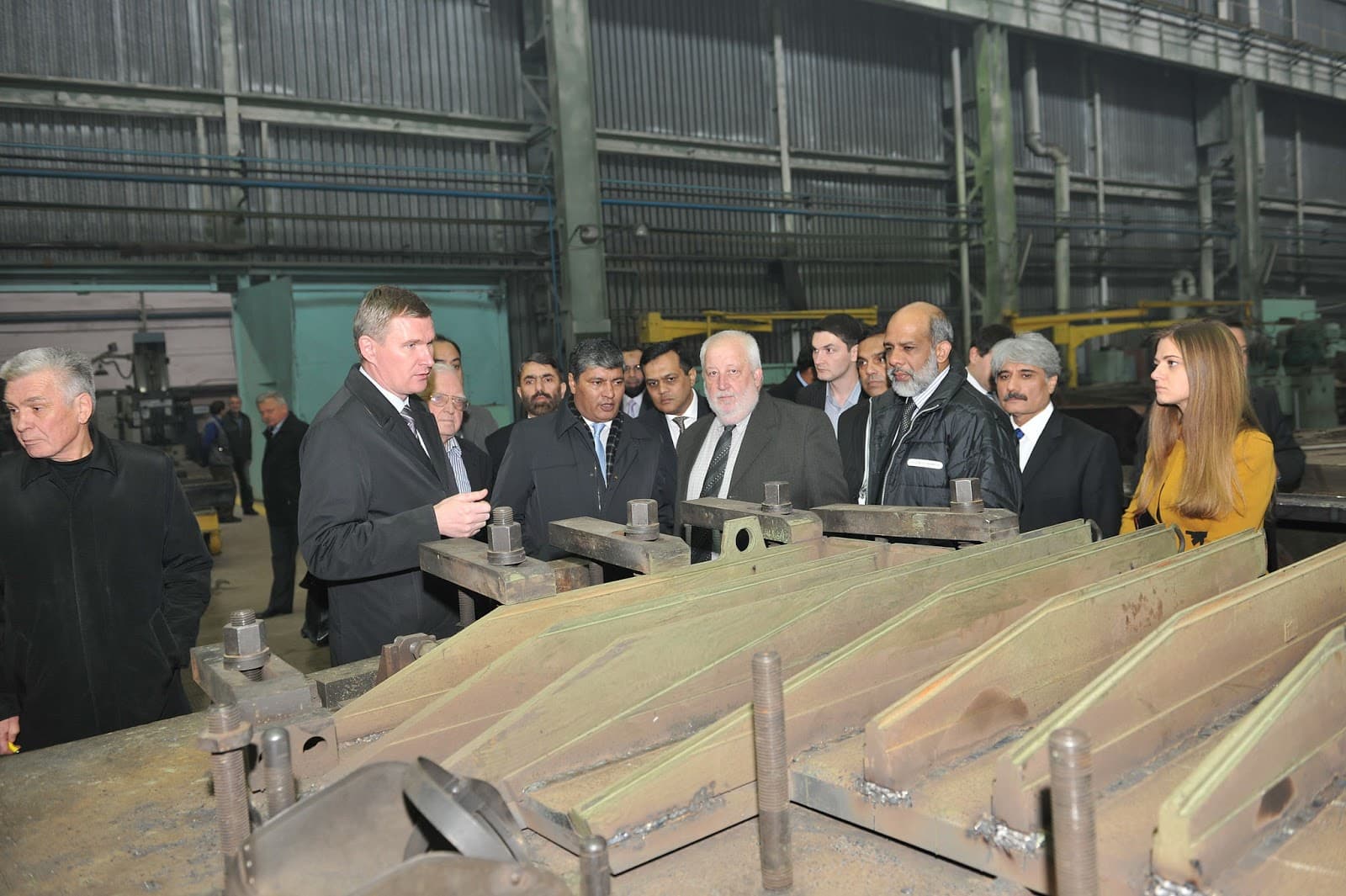Im not sure if you are trying to rage bait me but its not working
Btvt is making some interesting posts recently
https://x.com/andreibtvt/status/1966545361876775057?s=46&t=LO_FPDatH9sIUE5hlB6NPA
Well yes, it’s quite interesting. It’s interesting how gaijin uses the armor of some T-80 tanks and puts them on other models without adding other plates that they should have. That’s why there’s the unreal case of the T-80UD lasting less than the T-80U.
I think it’s kind of ridiculous that we are expected to believe that Oplot has 35mm(?) structural steel (half as effective as RHA) or rubber used between the ERA layers instead of the 50mm RHA plate displayed in multiple sources and factory photos. It’s just nerfing the tank for the sake of it.
With the ERA I can understand that some ambiguity is present with some sources giving some numbers and other sources giving other numbers. But with the missing RHA, the developers are just inventing things on their own so Oplot is one of the most under-armoured 12.0 T series tank.
Just by the weight of the UFP alone (800 kg more than T-80U), it should be fairly obvious that it has increased armour. I really hope the armour is fixed in the update, which is probably gonna be coming next week.
“Structural steel” is a bit of a joke as a concept in game in the first place. What do you mean structural, the purpose of the steel does not mysteriously make it 50% weaker?? It seems to practically just be used as the nerfing stick for plates gaijin doesn’t like.
 Any hope
Any hope
What “multiple” sources do you mean?
The manufacturer specifies protection for the Duplet module as a whole, taking into account all covers and dividers between the ERA elements. What was in the latest versions of the devs is consistent with what the manufacturer states, as well as the results of testing the Duplet module.
There was a full analysis here
https://community.gaijin.net/issues/p/warthunder/i/YSsW7MCQe99n
This is fortune telling on coffee grounds. Have you forgotten that Oplot has huge dividing plates of steel between the ERA elements? They make a significant contribution to the weight
In addition, a plate 2 by 2 meters (estimated area of the UFP T-80), 50 mm thick made of armor steel weighs at least 1.5 tons, you can see this by the weight of the basic Oplot armor, where the frontal part weighs 1770 kg only 1 steel plate.
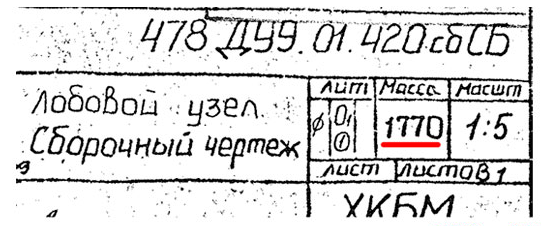
Any chance these dividing plates can be added
It’s in the game, it just wasn’t in the X-ray. I saw it through the Nvidia panel.
👌👌
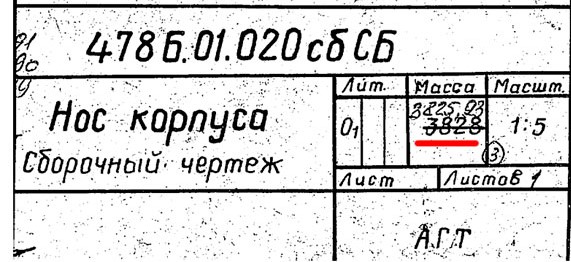
Greetings to the moderator of the russian forum. According to you, the weight of the frontal armor without textolite on the T80 should be around 4500, while the weight of the entire bow section with textolite is 3825. It can be assumed that all 80s in the game have inflated armor characteristics because the weight does not match, and in order for it to match, the armor steel must be replaced with a lighter structural steel - this follows from your words, but that’s not what I’m talking about. Further, then 3196 kg is the upper variable part of the Oplot, if we take the words 1500 kg 2x2 meters sheet ±, armored metal as 2 sheets on the T80 approximately. This results in a 60 mm plate + 15 mm cover and 35 mm separate screens, but the photos clearly show that the metal divides the space for installing dynamic protection blocks into two rows… What I’m getting at is that the weight doesn’t match no matter how you look at it. If the Oplot is supposed to have the same armor as it currently has in the game, then it turns out that all 80s have overestimated armor because the weight doesn’t match. If all 80s have the correct armor, then the Oplot’s weight doesn’t match. In general, we’ll see how it’s implemented when the technology is released.
There’s a thread on the armor of every T-xx series tanks, TLDR is that they’re all wildly overperforming, T-80U has like 100 mm more LoS thickness than it should.
I wrote that my calculation of a 2 by 2 meter plate is very approximate (based on the dimensions by eye).
However, in my opinion it is quite obvious that 770 kg is quite a little for a 50 mm plate of armor steel.
If anything, I do not claim 100%, I just want to draw attention to the community so that they are more attentive to the conclusions. “There are 770 additional kilograms, which means there is definitely much more armor” is a very rough assumption, given the difference in design, the lack of exact data on which specific parts this weight is indicated for. In addition, these are only small excerpts from the diagrams.
In order to change something, you need to approach the issue more carefully and more comprehensively. You need to look for explanations for counterarguments and prove why your arguments are better.
I always support good historical studies of inaccuracies in the game, but they must be based on good sources.
I have some questions where I, for example, disagree with some game implementation, but I focus on finding evidence based on the rules for accepting historical reports and try to immediately analyze counterarguments against my position to prove that I am right.
Firstly I would like to apologize if my tone felt rude, I am only trying to make sure this vehicle receives proper armour according to how it is implemented in war thunder for other vehicles.
We have two separate images from the factory showing the division between the two ERA modules should be steel, not rubber as some claim.
-
Here we can see the steel plates sandwiched between the two ERA layers:
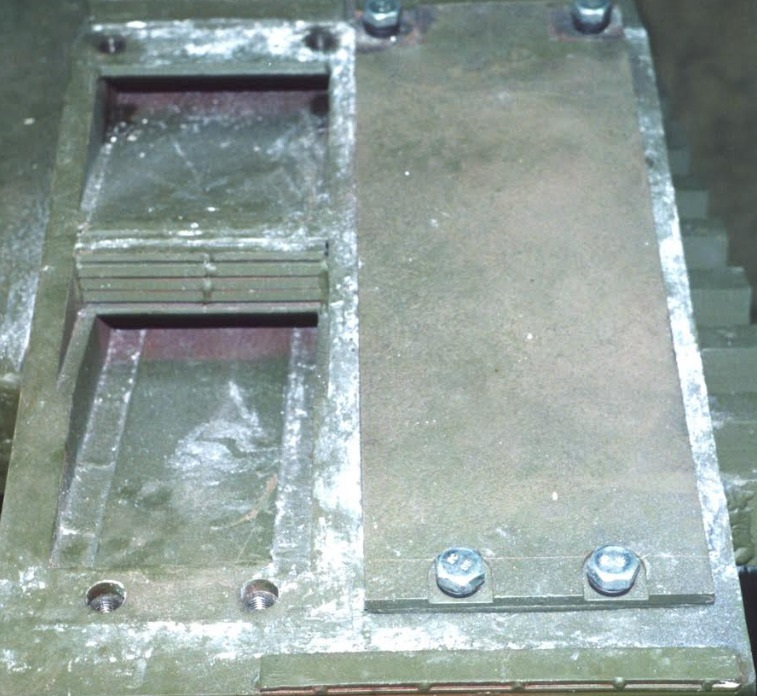
-
This second image shows that the dimensions of the sandwich plate is roughly equal to the bottom 50mm steel plate that contacts the textolite layer, we can say even if this is ‘structural steel’, it should be 50mm not 35mm:
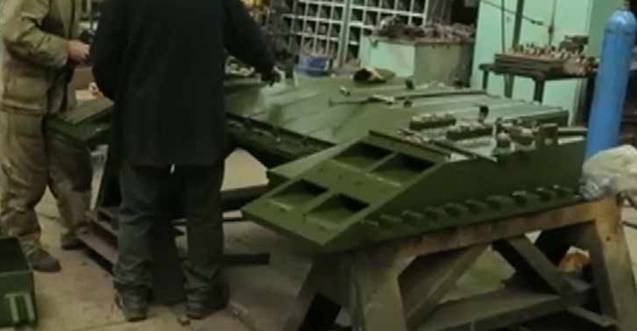
-
Additionally there are renders made by Btvt and another source that I could not find, which claim the presence of this steel plate:
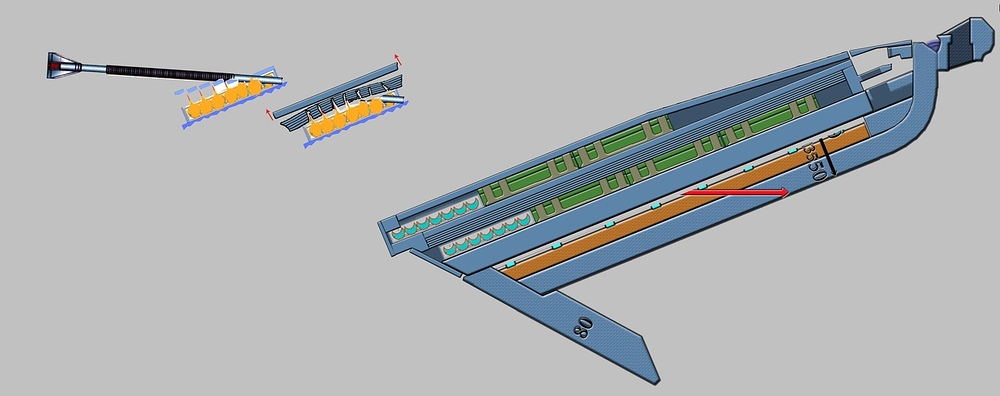
While yes, it cannot be proven whether this layer consists of RHA definitively, it cannot be proven that this layer is consisting of unarmoured steel either, no source mentions such plates being used. It would stand to reason that since this module is present where the armour should be the strongest, it would be given armoured plates. After all, the Kharkiv plant has extensive experience in tank building.
Another user has responded to this, the T-80U’s 3 steel plates would also exceed this specified weight.
Additionally, the base armour only has 1 steel plate yes, while the ERA module, which weighs 3196 kg, could be said to contain 2 steel plates of 50mm thickness if we take into account that the plates probably weigh lower that 1500 kg.
This all is however speculation, just as it is on the T-80U which should only have two steel plates according to the specified weight. Therefore, Oplot’s armour should not be nerfed based on this number alone unless the devs plan to change the composite arrays of all tanks to contain structural steel based on the specified weights.
I think there is some miscommunication on my part here, I am not saying BM Oplot has more plates than T-80U. From my understanding, taking into account both the base armour and ERA module, BM Oplot has the same number of 50-60mm steel plates as T-80U, that is 3 50-60mm steel plates. This can be observed in the comparison image made by Btvt provided earlier, the additional 770 kg weight most likely comes from the removal of one layer of textolite and its replacement with a layer of nizh/duplet. While both tanks also have a top layer of ERA protected by a thinner layer of armour that can be cancelled out against each other.
Can you please highlight for me where this is mentioned in the manufacturer specifications? I looked through the link provided and could not find this written anywhere.
“I love the smell of welded rubber in the morning”
That would be dumb to assume, and wrong to say, since you can clearly see the separation of the 2 layers
It’s definitely impossible to tell what we’re looking at here. Also note that I asked about the “multiple sources” you mentioned separately from the photo.
Actually, this is called “no reliable sources”. Renders and figurative schemes from various Internet sites that have nothing to do with the manufacturer are not considered any source.
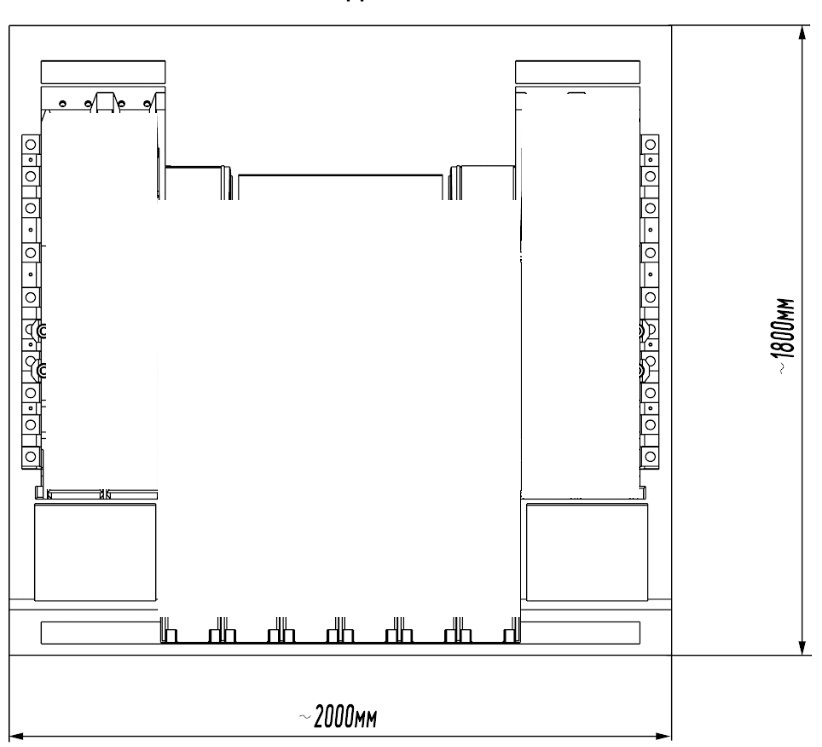
Drawings of the Oplot
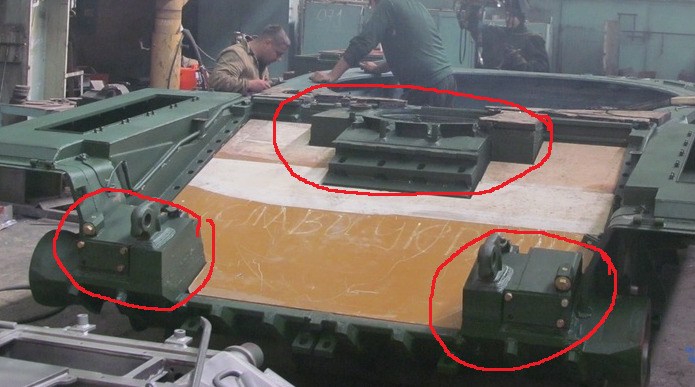
The circled elements are included in the weight, which explains the weight of 1770 kg.
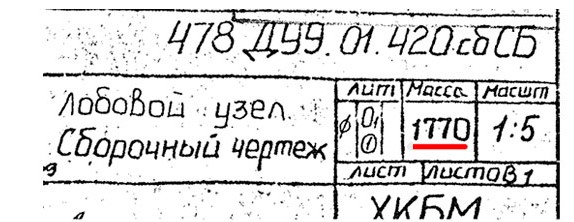
The upper module without dynamic protection blocks weighs 3,196 kg. This is 629 kg less than the entire front section of the T80u. This consists of three 50 mm thick sheets (including the driver’s window armor) + two textolites. The weight does not match the armor, no matter how you look at it. The only option that somehow explains the weight is the 50 mm thick plates welded between the ribs, which are supposed to separate the dynamic protection blocks. So, as many here say, it is this missing 50 mm plate, only it is not solid.


Very much possible
Sure you can say that these renders have no basis in reality even though we can see from the photos provided that there exists such a steel plate of a 50mm thickness.
But please list the reliable manufacturer related source that specifies a 35mm unarmoured steel plate? The weight increase from T-80U to BM Oplot is caused by the presence of additional ERA layer, while preserving the weight from the 3 50-60mm plates in the T-80U composite array. Removing an entire 50mm plate would most likely have made the UFP lighter than T-80U’s.
Edit:
Just read above that the BM Oplot ERA module weighs 3196 kg without the ERA present.
If this is the case then there is no real argument left to say that the module should only contain one 50mm plate and a 35mm plate. It should definitely contain 2 50mm plates, along with the weight of the structure that divides the ERA tiles all should be covered by that weight.
The weight makes much more sense than T-80U’s UFP weight in this case.
There is also a question regarding the implementation of Duplet. Why are the values from the brochure taken and modeled in gaming conditions, i.e., the gaming performance of Zbm42? When Contact 5 took a simple number from the brochure, which indicates 120 mm from M829, it is actually 540 mm to 550 mm equivalent of rolled homogeneous armor (RHAe) at 2000 meters, in the game 444 at 2 km or 469 at close range. In reality, the K-5 gives a 22% reduction in penetration, and in the game, 27% at a distance of 2 km. Let’s take the Mango 550+ penetration at 100 meters, as verified by 70+ mm of shell remnants that hit and penetrated the armor after the Duplex, i.e., 480 mm stopped the Duplex. 87% according to the video in which the test was conducted, as well as the photos that Ralin shows. The game shows 454 mm at 100 meters for Mango, from which we calculate 87% - that is, there should be a reduction of 395 mm, but in the game we have 280 mm, 61%±. According to the booklet, this is correct… According to the actual test and shooting, this is not the case.
